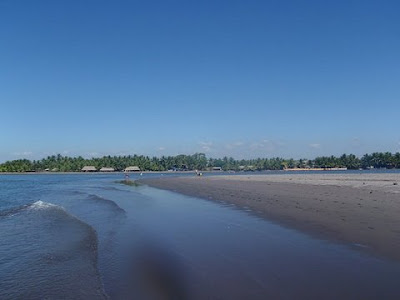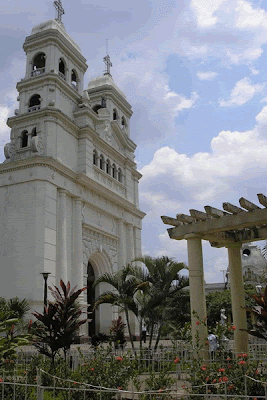Due to the tragic incidents occurred just a month ago, I had to think more than twice about including the San Vicente Pacaya municipality in today's post. To be honest, after the tremendous explosion of the Pacaya Volcano and just a couple of days after that, the flooding caused by the heavy rains poured during the Agatha Storm over the central valley still covered with a thick layer of volcanic residues, made me wonder if I should just skip talking about the Pacaya area. Not knowing how damaged is the town, the villages nearby, and the surrounding natural attractions, including the Caldera Lagoon, made me feel unconfortable about today's post. Not withstanding my reservations and overcoming my hesitation, I decided to feature Pacaya.
I wouldn't like to seem disrespectful and sincerely hope that everything is returning to normal for the people in the area, my best wishes are with them for speedy recovery.
This recovery brings me back to the possibilities that many of Guatemala's regions could benefit from tourism. I will keep stating that tourism is a great way to improve everybody's lives: while travelers enjoy and learn, locals promote and sell their products or services.
Even after last month's explosion, the Pacaya Volcano National Park continues to be the municipality's main tourist attraction. The volcano is actually a complex of several active volcanoes, only 30 kilometers east of Guatemala City.
For years, it has been a popular volcano to climb because I know for a fact that it wasn't too difficult and, on sunny days, the views are stunning. Again, I don't know the current conditions and am not even sure that the park is open for climbing excursions.
The Pacaya volcano is part of the Central American Volcanic Arc, a chain of volcanoes stretching from the northwest to the southeast along the Pacific coast of Central America, formed by the Cocos Tectonic Plate beneath the Caribbean Plate. The volcano lies on the southern edge of a sizable volcanic caldera formed in the Pleistocene age which contains Lago de Amatitlan.
After the last caldera-forming eruption 23,000 years ago, several smaller vents within and around the caldera have seen eruptive activity. Pacaya is the largest post-caldera volcano, and has been one of Central America's most active volcanoes over the last 500 years.
About 1,100 years ago, the volcano's edifice collapsed, causing a huge landslide. Deposits from the landslide traveled about 25 kilometers (16 mi) from the volcano down to the Pacific coastal plain. The landslide left a large crater, within which the current active cone has grown. The presence of a magma chamber at shallow depths beneath the volcano means that distortion of the cone leading to instability and future landslides remains a hazard to the surrounding areas and considering what happened a month ago, it would be expected that those towns are relocated to safer areas, after all, there is nothing we can do against the forces of nature.























































